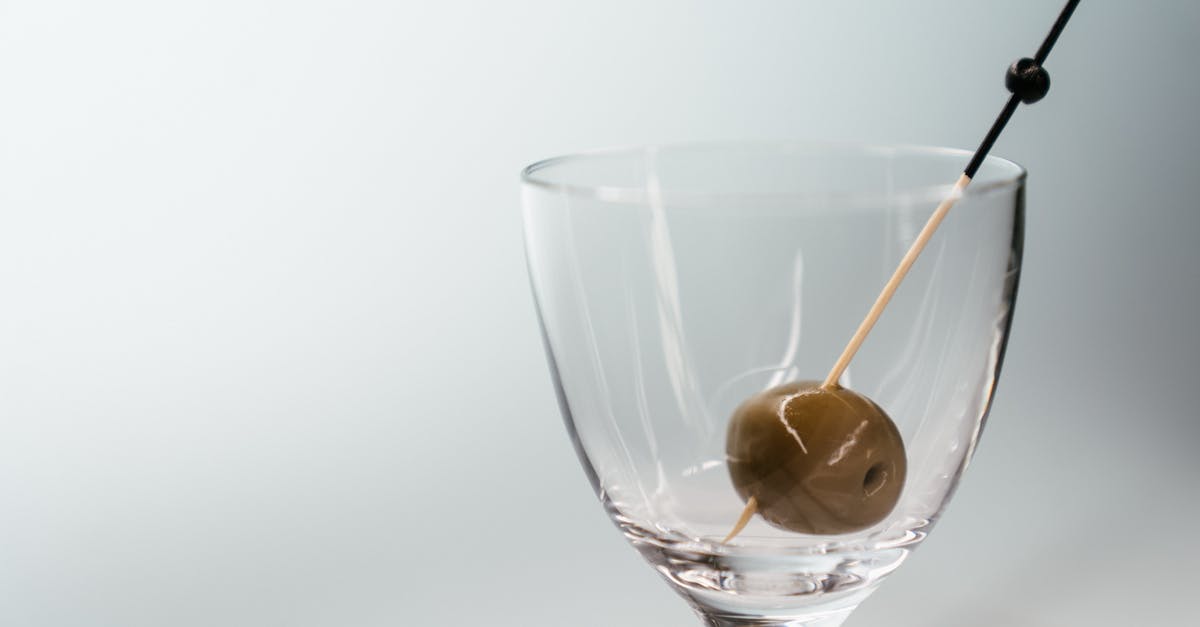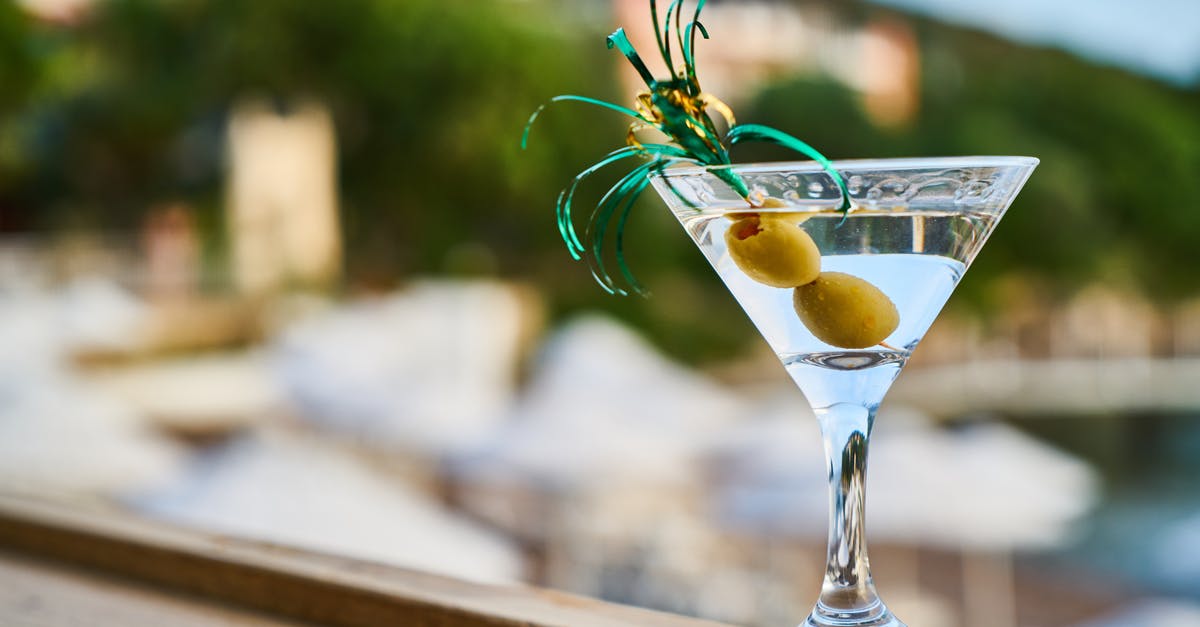Why does a (vodka) martini often come with an olive on a stick?

With Spectre being released in cinemas around the world soon, I've been looking for some James Bond montages on youtube. One of them that I came across was the classic "Vodka Martini. Shaken, not stirred". We already have a question about why Bond asks for this special preparation, but one thing that I always found weird was that this drink usually comes with an olive. I understand that cocktails more often than not have some garnish, but why an olive?
Best Answer
Olives (and onions) are a very traditional garnish used by bartenders to add a slightly savory flavor to a drink. As with many things behind the bar, they're used nowadays largely because they're iconic, but they do have a subtle effect on flavor.
It's not really known where traditional garnishes such as citrus peels, cherries, olives/onions, and mint sprigs originated, but they're found in the earliest known published bartender's manual. (This was Jerry Thomas' How to Mix Drinks or the Bon-Vivant's Companion; cocktail historian David Wondrich's book Imbibe!, which reorganizes and provides context for the original, is required reading for the modern cocktail nerd.) These garnishes may have started with early drink families called cobblers and juleps which feature fresh berries and mint, respectively. Over time, drinks got more elaborate and drinkers came to expect something added to their drinks to give them more visual appeal. Here's a great, brief article that breaks down some of the history and usage of these.
At first, as seen in other early bartending guides, bartenders just tossed whatever they had (usually preserved or pickled items that kept well including nuts, olives, and cherries) into the drink on hand. Eventually they sorted themselves out and figured out that olives or onions went best with savory drinks such as the Martini, and cherries went best with sweeter drinks such as the Manhattan. The tradition solidified a few years before Prohibition in the US, and was one of the practices that survived the resulting upheaval in drinking traditions.
In the 1950s, Martini practices grew more variable; when ordering, you'd be quizzed about whether you wanted vodka or gin, shaken or stirred, an olive or a twist, without any particular standard. The olive may have become even more tightly associated with the Martini later on, when drinks began skewing to sweet and fruity in the late 1960s and 1970s, and fresh citrus started disappearing behind the bar. For whatever reason, bartenders also seem to have forgotten how to store vermouth (which, since it's a wine, will go off if stored at room temperature and allowed to oxidize) and the olives may have been the only thing preventing Martinis from being unpleasantly bitter. By the 1980s, the "dirty" Martini (which adds a dash or more of olive brine) emerged as one of the few options for drinkers who wanted a non-sweet cocktail at a bar. Fortunately, we've now come full circle, and a Martini closer to the original pre-Prohibition version can be found at many cocktail bars (usually with a twist of lemon peel). But the olive has now been firmly established as the traditional Martini garnish for multiple generations.
One of the main reasons that the briny olive works as a garnish is because a small amount of salt is a flavor enhancer, which is why just about every savory dish that we eat (and some sweet ones, ala salted caramel) contain at least some salt. There aren't many drinks where salt is added directly, but there are certain drinks (such as the Margarita) where it's an important part of the flavor, and some modern bartenders with a culinary background use a couple drops of salt solution in almost all of their drinks. Some people particularly like this in a Martini, especially if that's what they're used to.
So, the tl;dr: It's now seen as traditional, some people really like the salty flavor it adds, and it works pretty well in a largely savory drink like the Martini.
Pictures about "Why does a (vodka) martini often come with an olive on a stick?"



Quick Answer about "Why does a (vodka) martini often come with an olive on a stick?"
Its generally believed the saltiness of the olive juices make the drink more palatable. Many preparations will put 2 or 3 olives directly inside the drink, or one drained olive on a stick with a bit of juice of the olives mixed into the drink.Why do vodka martinis have olives?
Olive brine \u2014 or olive juice \u2014 is a mixture of salt, vinegar and water, and as olives marinate, the liquid becomes beautifully rich with olive flavor. That salty goodness is a pungent boost that will deepen the flavor profile in your cocktail.Why do martinis have 3 olives?
For such a simple garnish, the olive is subject to one simple rule: The olives topping Martinis must always be in groups of three or singular. An unspoken superstition deems an even number of olives bad luck.Why do you put an odd number of olives in a martini?
Tradition says an odd number of olives is best for luck, never even. One of my favourite Frank Sinatra yarns is that if he was keen on a dame he'd offer his Martini olives.Do you eat the olive in a martini?
Serious martini drinkers go as far as to claim that an olive is what makes the martini a martini. The olive gives the cocktail a subtle salty kick, but not nearly as much kick as the dirty martini has. Don't eat the olive until after you've finished your martini. Doing so will inevitably make you look like a rookie.How to Make a Martini With Vodka and Olive Juice
More answers regarding why does a (vodka) martini often come with an olive on a stick?
Answer 2
Its generally believed the saltiness of the olive juices make the drink more palatable. Many preparations will put 2 or 3 olives directly inside the drink, or one drained olive on a stick with a bit of juice of the olives mixed into the drink.
Sources: Stack Exchange - This article follows the attribution requirements of Stack Exchange and is licensed under CC BY-SA 3.0.
Images: Dziana Hasanbekava, Dziana Hasanbekava, cottonbro, Engin Akyurt
